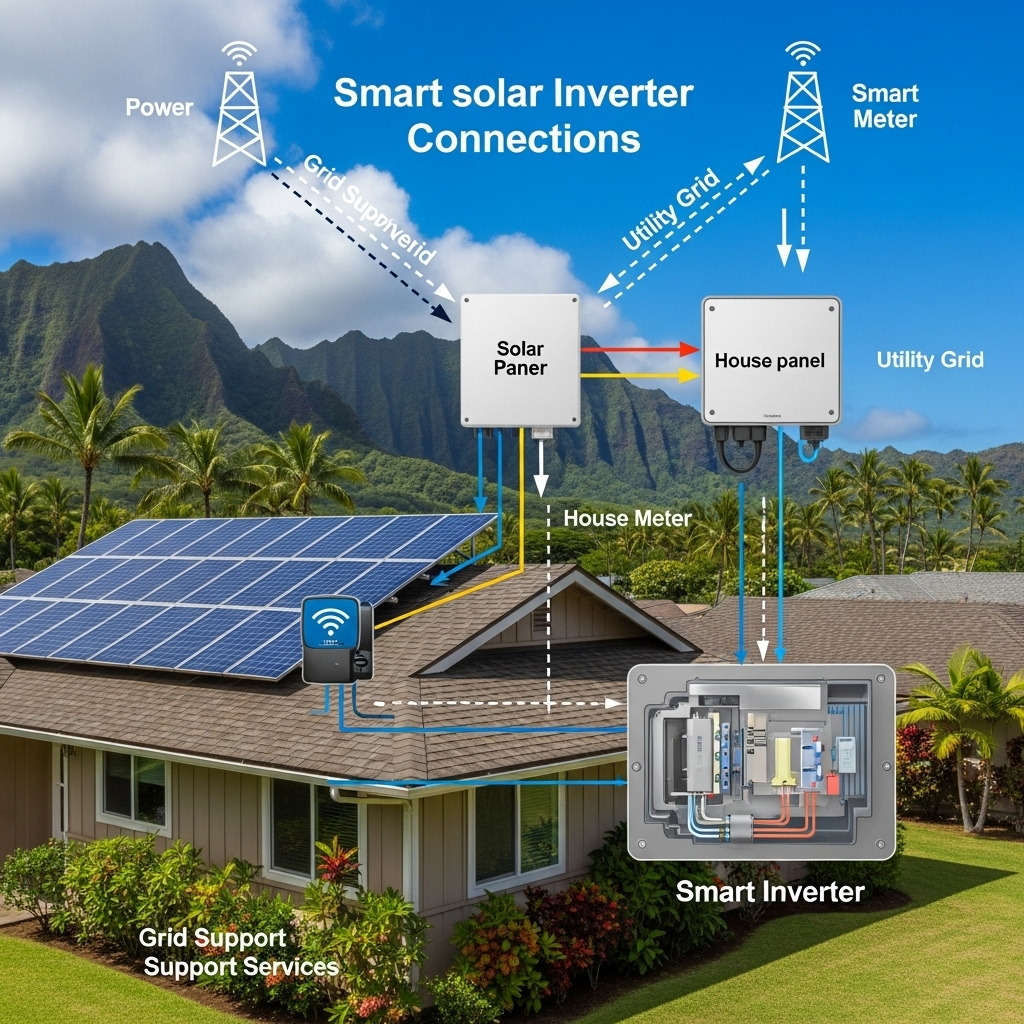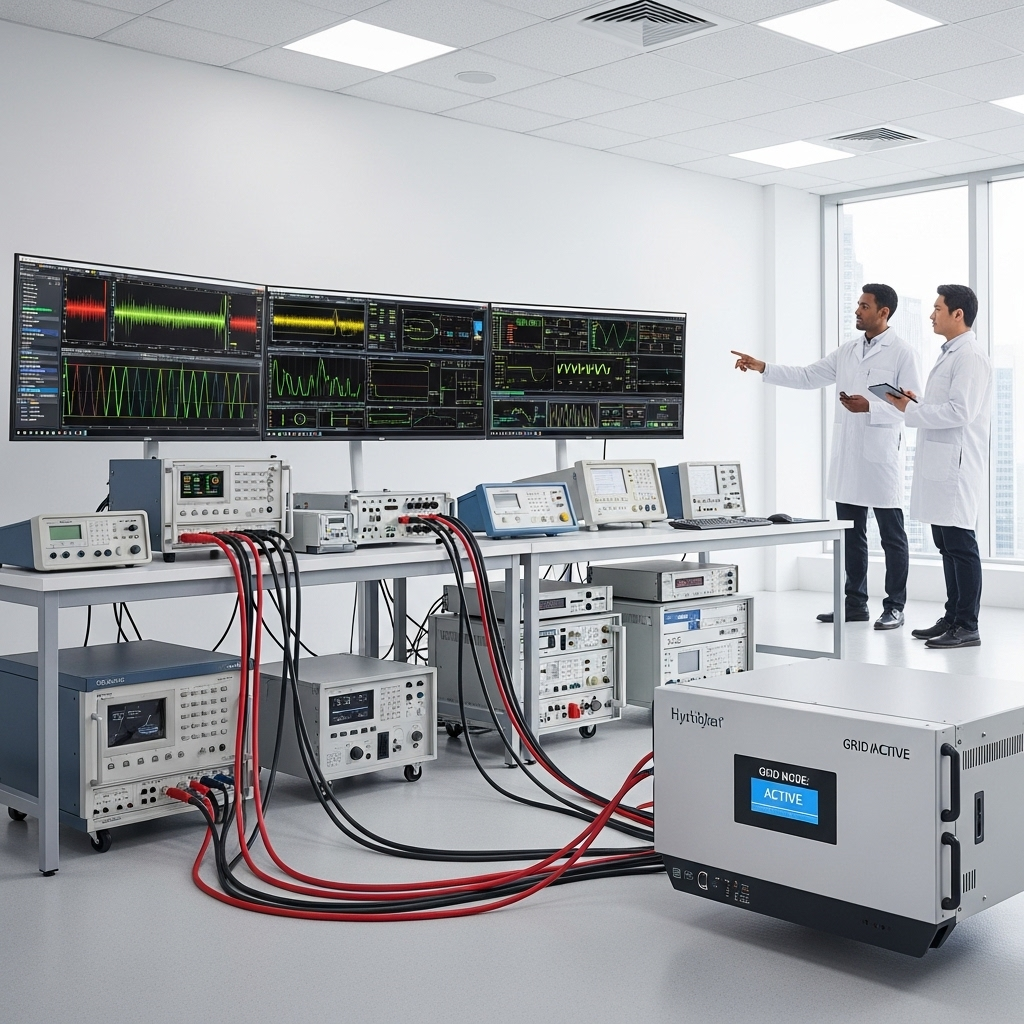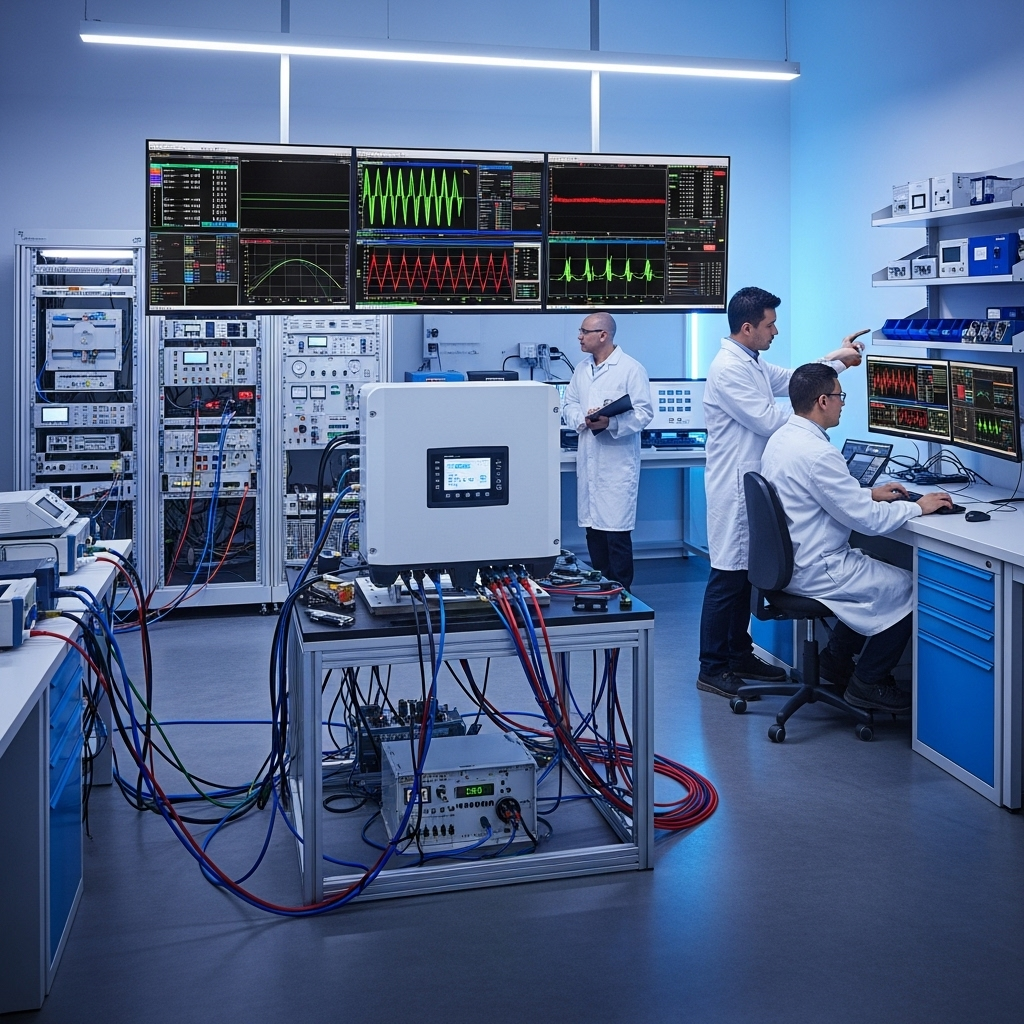Hawaii's rapid adoption of solar energy presented a unique challenge. As more photovoltaic (PV) systems came online, the electric grid faced increasing strain, leading to a halt in new interconnections. This case study examines how rigorous testing, guided by the IEEE 1547 standard, provided the critical data needed to resolve grid stability concerns. The solution not only re-opened the door for thousands of solar customers but also created a valuable blueprint for grid management in high-penetration renewable energy environments.
The Grid's Tipping Point: Hawaii's Solar Saturation Problem
High concentrations of solar power can create significant technical hurdles for traditional grid infrastructure. In Hawaii, the sheer volume of solar generation began to test the limits of the system, forcing utilities to pause new connections while they assessed the potential impacts.
Understanding High Penetration Risks
When solar generation peaks midday, it can sometimes exceed the local demand for electricity. This imbalance creates several risks. According to a project analysis by the U.S. Department of Energy, potential issues include over-voltage, reverse power flow, and other service disruptions that can affect grid reliability. These technical challenges were the primary reason for the temporary moratorium on new PV system interconnections, leaving many homeowners and businesses in a queue.

The Interconnection Queue Backlog
The practical consequence of these grid concerns was a significant backlog. As detailed in an EERE Success Story, the work done to resolve these issues enabled more than 2,500 solar customers to finally connect their systems to the grid between late 2014 and early 2015. This situation highlighted an urgent need for a verified, data-driven approach to integrating distributed energy resources (DER) without compromising grid stability.
The Solution: Advanced Inverter Testing and IEEE 1547
The path forward involved a collaborative effort between utilities, national laboratories, and solar companies. By using advanced simulation and testing methods centered on the capabilities of modern inverters, stakeholders found a reliable solution.
The Role of Smart Inverters in Grid Support
PV inverters are the devices that convert the direct current (DC) power from solar panels into the alternating current (AC) power used by the grid. Modern 'smart' inverters can do much more. They possess advanced functions that allow them to actively support the grid by regulating voltage, adjusting frequency, and managing power flow. These capabilities were central to solving Hawaii's interconnection problem.
Simulating Real-World Grid Conditions
To validate the performance of these smart inverters, researchers used sophisticated power grid simulators. At the National Renewable Energy Laboratory (NREL), engineers conducted extensive tests to analyze inverter behavior under various grid conditions. This research involved simulating events like the sudden loss of a power plant or a large electrical load tripping offline. Specific evaluations, such as load rejection overvoltage tests and ground fault overvoltage tests, generated critical data on how the inverters would respond to grid disturbances.
From Lab Data to Grid Approval
The computer models and test results generated through this process provided Hawaiian Electric with the technical evidence it needed. The data demonstrated that the smart inverters could not only coexist with the grid but actively help maintain its stability. This newfound confidence, backed by empirical data, was the key that unlocked the interconnection queue, allowing new solar power systems to be safely connected.
IEEE 1547: The Standard that Shaped the Solution
Underpinning this entire effort was IEEE 1547, the foundational standard for grid interconnection. This standard provides the technical specifications and testing procedures required for DER to connect to the grid safely and reliably.
What is IEEE 1547?
The IEEE Std 1547-2018 is a crucial international certification option for DER, establishing the rules for interoperability and performance. It ensures that all connected devices, regardless of manufacturer, behave in a predictable and non-disruptive manner. The standard covers requirements for voltage and frequency ride-through, power quality, and anti-islanding protection.
How the Hawaii Case Influenced the Standard
The work in Hawaii was not just an application of the standard; it was a real-world test that provided valuable feedback. The successful lab and field demonstrations contributed to important updates to the interconnection standards. As noted in an EPRI project summary, this research led to amendments like IEEE 1547a-2014 and IEEE 1547.1a-2015, which refined testing protocols. This feedback loop ensures that standards evolve to meet the challenges posed by modern energy systems.
The Link Between IEEE 1547 and UL 1741 Certification
IEEE 1547 sets the performance requirements, while UL 1741 provides the framework for testing and certification. Specifically, the UL 1741 Supplement SB is used to test and certify that smart inverters meet the grid-support functions outlined in IEEE 1547. This certification process is essential for manufacturers to prove their products are compliant and for utilities to trust the equipment connected to their grids.
Broader Implications for Solar and Storage Integration
The Hawaii case study offers valuable lessons that extend far beyond the islands. It serves as a model for how to manage the transition to higher levels of renewable energy penetration globally.
A Blueprint for Other High-Penetration Grids
Any region experiencing rapid growth in solar and other DERs can look to this experience as a guide. It demonstrates the importance of proactive collaboration between utilities, regulators, and technology providers. Standardized testing and certification create a common language and a trusted framework for managing complex grid interactions. The table below summarizes the shift in grid conditions.
| Metric | Before Advanced Inverter Testing | After Implementing IEEE 1547-based Solutions |
|---|---|---|
| New PV Interconnections | Halted / Queued | 2,500+ systems connected |
| Grid Voltage Stability | At risk of over-voltage | Managed via inverter functions |
| Utility Confidence | Low, leading to connection moratoriums | High, based on verified performance data |
| Interconnection Standard | Less equipped for high DER | Updated to reflect real-world needs |
The Importance of Performance and Reliability
This case underscores that successful grid integration depends on high-quality, reliable equipment. Choosing certified components is the first step. However, achieving optimal system output requires a holistic view. As explained in the Ultimate Reference to Solar & Storage Performance, elements like battery depth of discharge and inverter efficiency are critical variables that dictate the true energy output and longevity of a system. Verified performance through standards like IEEE 1547 ensures the equipment has the capability, while proper system design ensures that capability is realized.
Lessons for a Renewable Future
The resolution of Hawaii's PV interconnection backlog is a landmark achievement in modern energy. It proved that with the right standards, testing protocols, and collaborative spirit, high levels of renewable energy can be integrated safely and effectively. The IEEE 1547 standard was not just a rulebook; it was a tool that enabled engineers to build confidence, verify performance, and unlock a cleaner energy future. This data-driven approach remains the cornerstone of building a resilient and reliable grid for generations to come.
Frequently Asked Questions
What is the primary function of IEEE 1547?
IEEE 1547 is a standard that provides the technical requirements for interconnecting distributed energy resources (DER), like solar PV systems, with the electric power grid in North America. It ensures safety, reliability, and interoperability.
How did IEEE 1547 testing help in Hawaii?
Testing inverters against the principles of IEEE 1547 allowed engineers to model and verify how they would behave under high-solar conditions. This data proved the inverters could support the grid, not harm it, allowing the utility to approve thousands of stalled connections.
Is compliance with IEEE 1547 enough for grid connection?
While certification to standards like UL 1741 SB, which tests against IEEE 1547, is a critical step, local utilities often have additional requirements or specific settings. It is the foundation for approval, but not always the final word.
How do international standards like IEC 62109 relate to IEEE 1547?
IEC 62109 is primarily a safety standard for inverters, while IEEE 1547 focuses on grid interconnection performance and interoperability. They are complementary; a product for the North American market typically needs to comply with both to ensure it is both safe and grid-supportive.





Leave a comment
All comments are moderated before being published.
This site is protected by hCaptcha and the hCaptcha Privacy Policy and Terms of Service apply.